Going to Antarctica has been the very top of our travel bucket list for a long time. How do we even begin to describe what this expedition has meant to us? Arguably the ultimate highlight of The Great Expedition, Antarctica seemed out of reach for a long time. Not only was it very far and expensive, it simply took time we didn’t have on a regular vacation. But for most travelers, it’s the last continent, the last frontier, the last wilderness. The ultimate expedition. More than anything, Antarctica represented the wildness we felt inside of us and there was no better place to connect with our inner explorers.
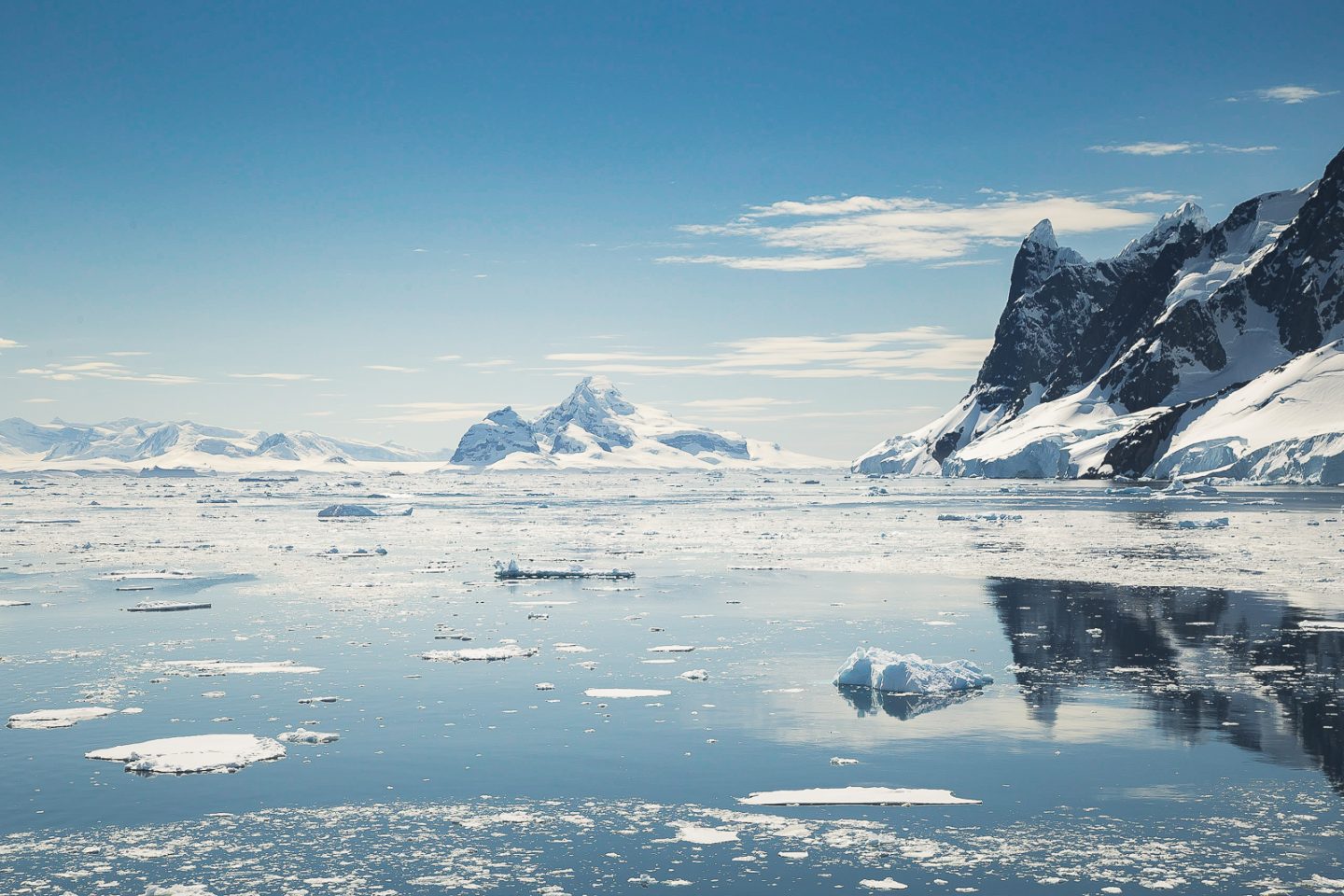
Itinerary and Landings
We began by looking at the 10-day Antarctica trips, but could not bear to not go to South Georgia if we were going all this way already. So we did more digging and found this dream itinerary including Falkland Islands and South Georgia in addition to Antarctica with Hurtigruten, a norwegian expedition cruise line. Every trip to Antarctica comes with a rough itinerary, though it is entirely weather-permitting and conditions dependent. This means every single trip is a unique adventure. This is what ours looked like:
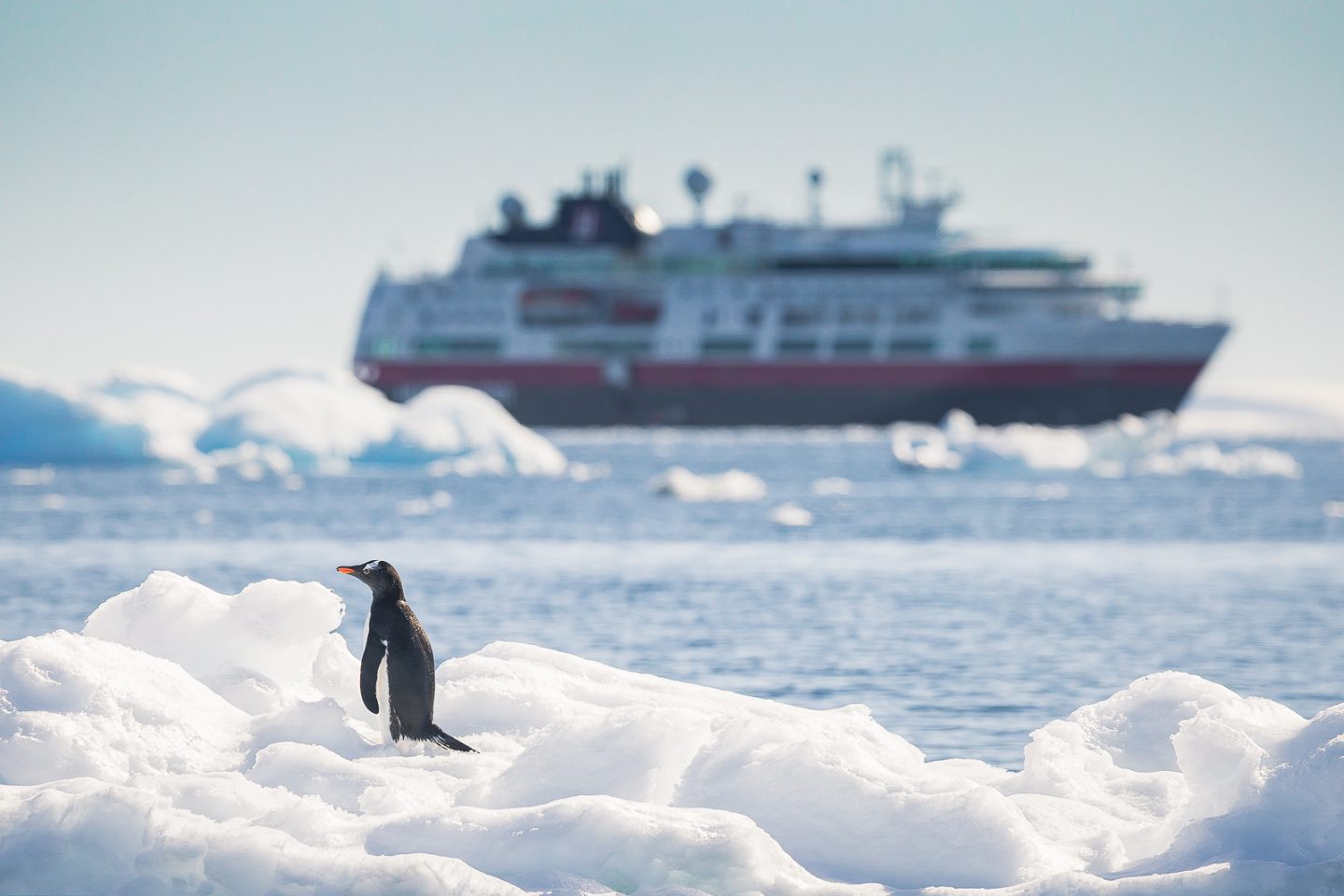
- Day 1: Depart from Ushuaia, Argentina
- Day 2: Sea day sailing to Falkland Islands
- Days 3-5: Falkland Islands
- Days 6-7: Sea days crossing the Antarctic convergence to South Georgia
- Days 8-11: South Georgia
- Days 12-13: Sea days sailing to Antarctica
- Days 14-19: Antarctica
- Days 20-21: Crossing the Drake Passage
- Day 22: Arrive back to Ushuaia, Argentina
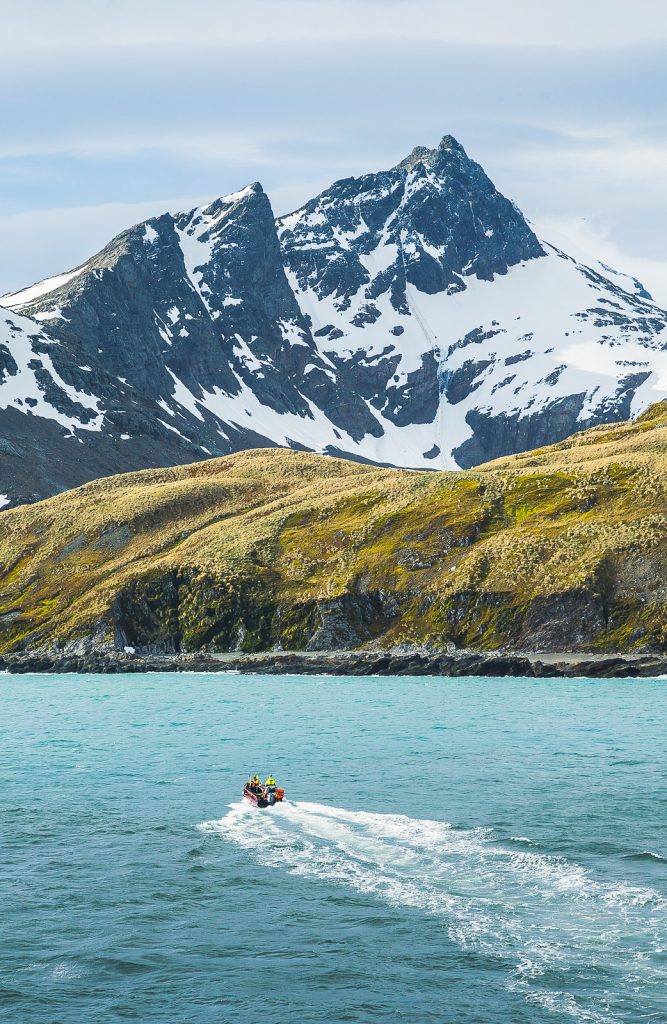
Besides sea days, everyday typically had two landings or tender boat cruising where we left the main ship on tender boats to shore or on a scenic cruise. Again, there was always a Plan A, though we often resorted to Plans B, C, etc. depending on the circumstances at the time. Our landing/cruising ended up being the following, with plenty change of plans, especially in Antarctica:
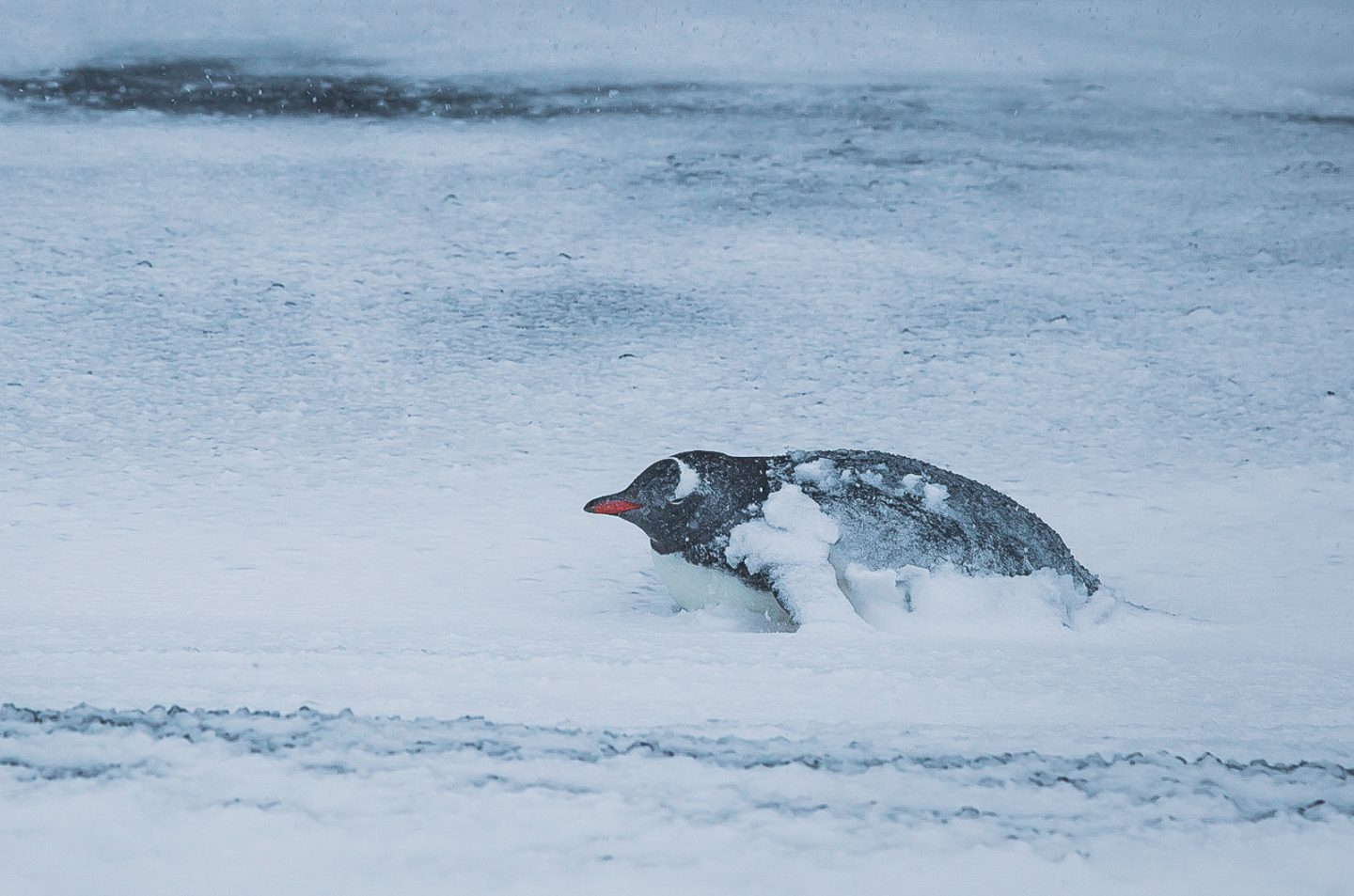
- Falkland Islands (for more pictures, the Falkland Islands gallery)
- New Island
- West Point Island (late evening landing)
- Saunders Island
- Carcass Island
- Stanley (full day docked at pier)
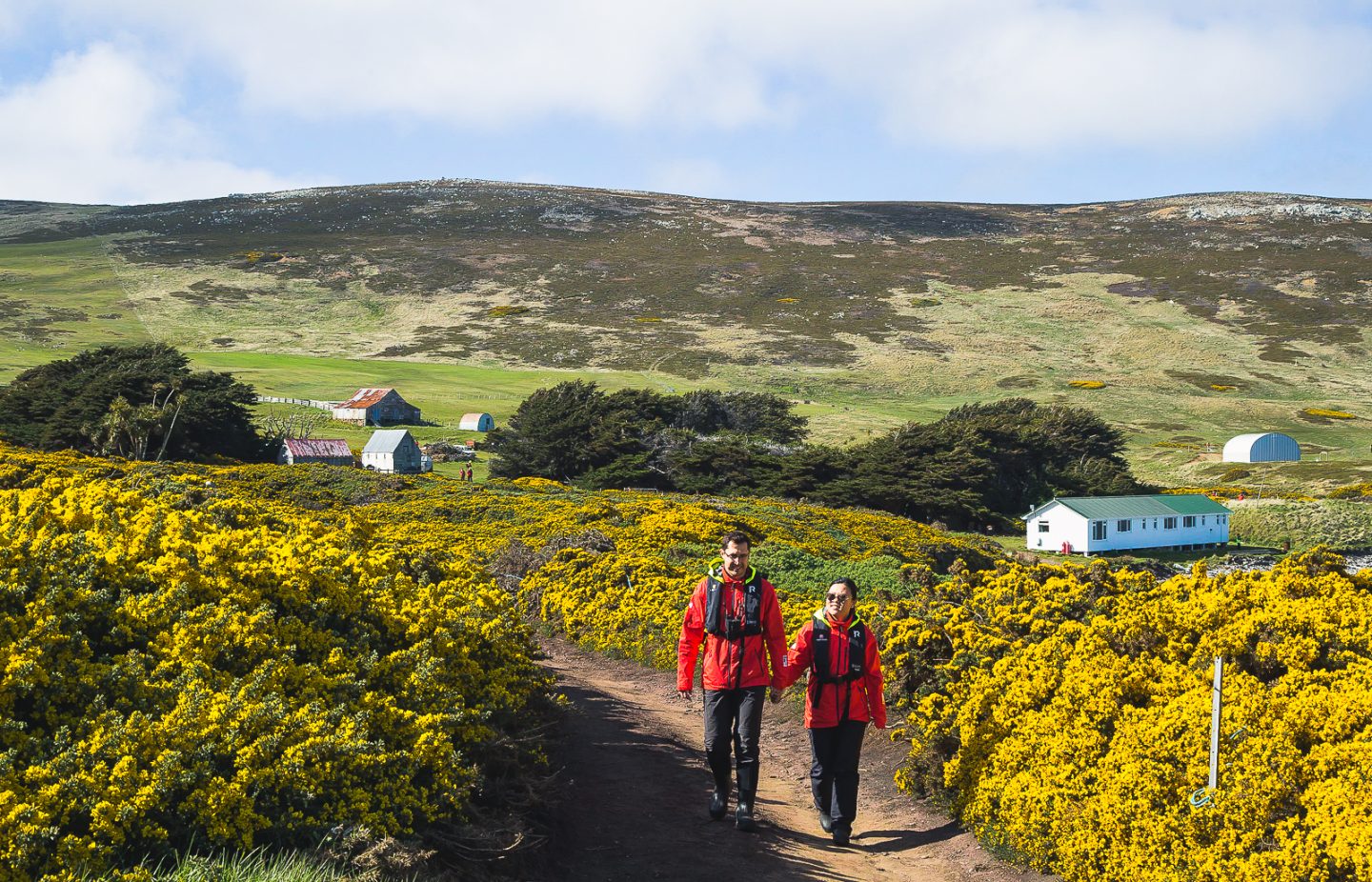
- South Georgia (for more pictures, the South Georgia gallery)
- Cape Rosa (and cruising King Haakon Bay)
- Right Whale Bay
- Salisbury Plain
- Fortuna Bay (with hike to Stromness)
- Stromness
- Grytviken (missed St. Andrew’s Bay)
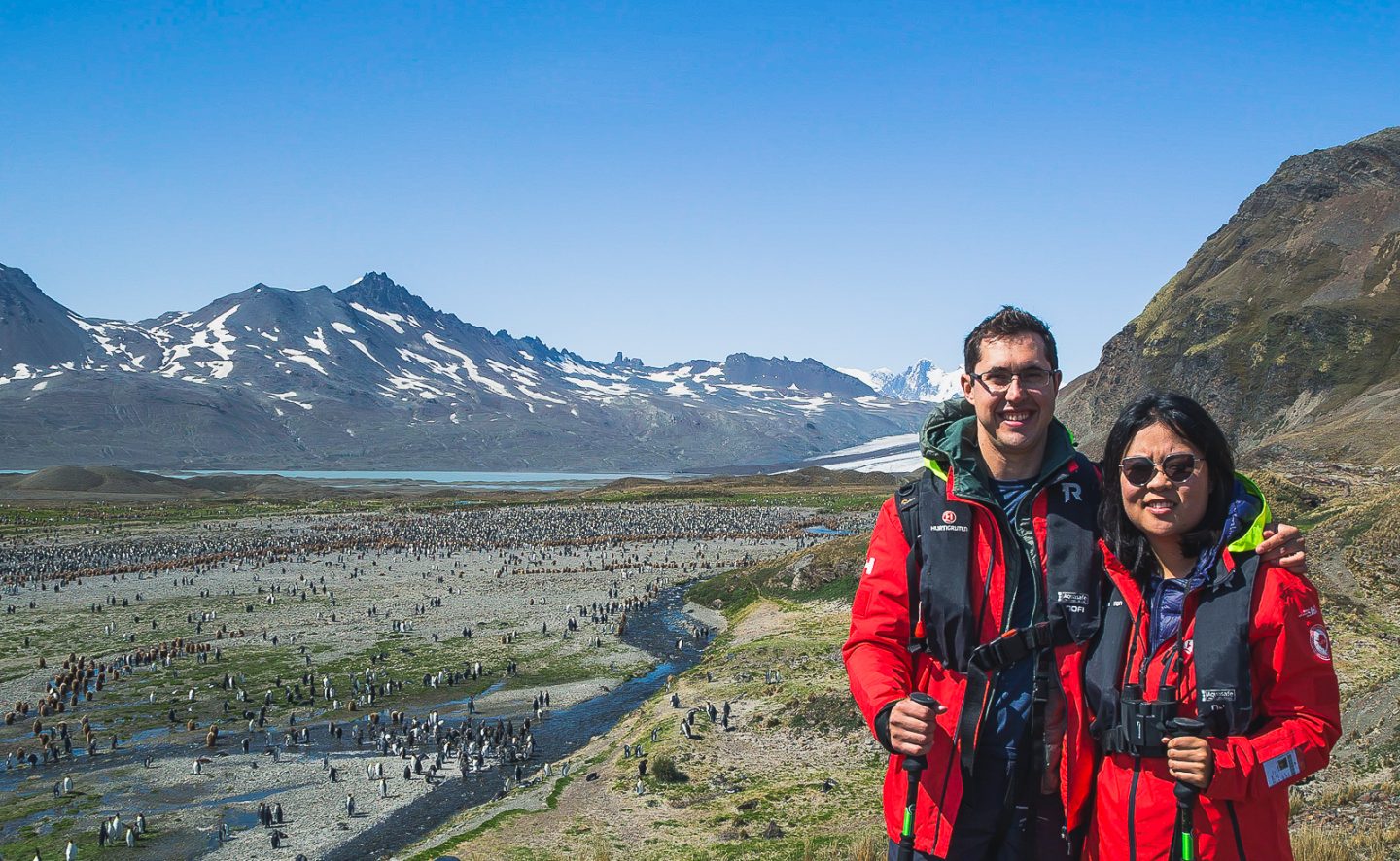
- Antarctica (for more pictures, the Antarctica gallery)
- Point Wild on Elephant Island (missed Kinnes Cove)
- Brown Bluff (and cruising the Antarctic Sound)
- Yankee Harbor
- Deception Island (instead of Aitcho Islands) where we did the polar plunge!
- Wilhelmina Bay (scenic cruise)
- Station Almirante Brown in Paradise Harbor (instead of Orne Harbor)
- Danco Island
- Damoy Point
- Lemaire Channel (scenic cruise)
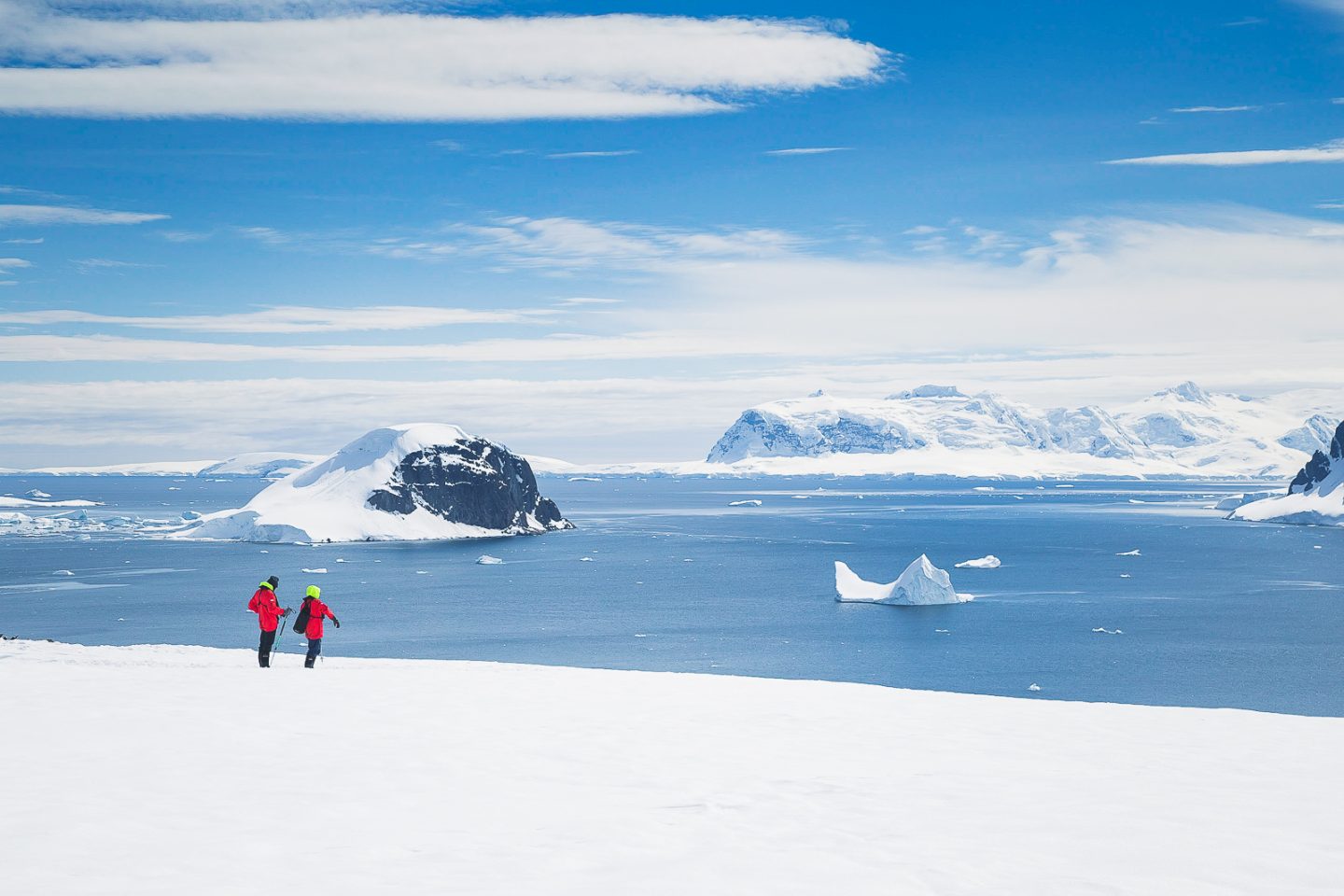
We completed landings/cruisings by boat group, rotating through which boat groups went first. Muck boots provided were mandatory for almost all landings, as well as a life jacket. Most of us also always wore the Hurtigruten expedition jacket outer-layer we each received as a gift, that for photography purposes, was a nice bright red. There was a lot of changing clothes back and forth, but we didn’t mind looking and feeling like true explorers – and being prepared for the unpredictable and constantly changing weather in the southern seas.

Everyday had a daily program, while each landing day had a daily briefing on the prior evening when we were given all the logistical details for the following day. It really felt like an expedition – there was such a sense of excitement and adventure for the next day and what’s to come.
Life On-board the MS Fram
Named for the same ship that Norwegian explorer Fridtjof Nansen designed and used in the Arctic, as well as Roald Amundsen sailed to become the first man to the South Pole, MS Fram was our home for 22 days (more than anywhere else on the trip). While it was a cruise, it was not at all like the typical Caribbean cruises we had previously been on. For one, it was smaller, at 400-passenger capacity, though the Antarctica trips are never more than 200 (we had 180).
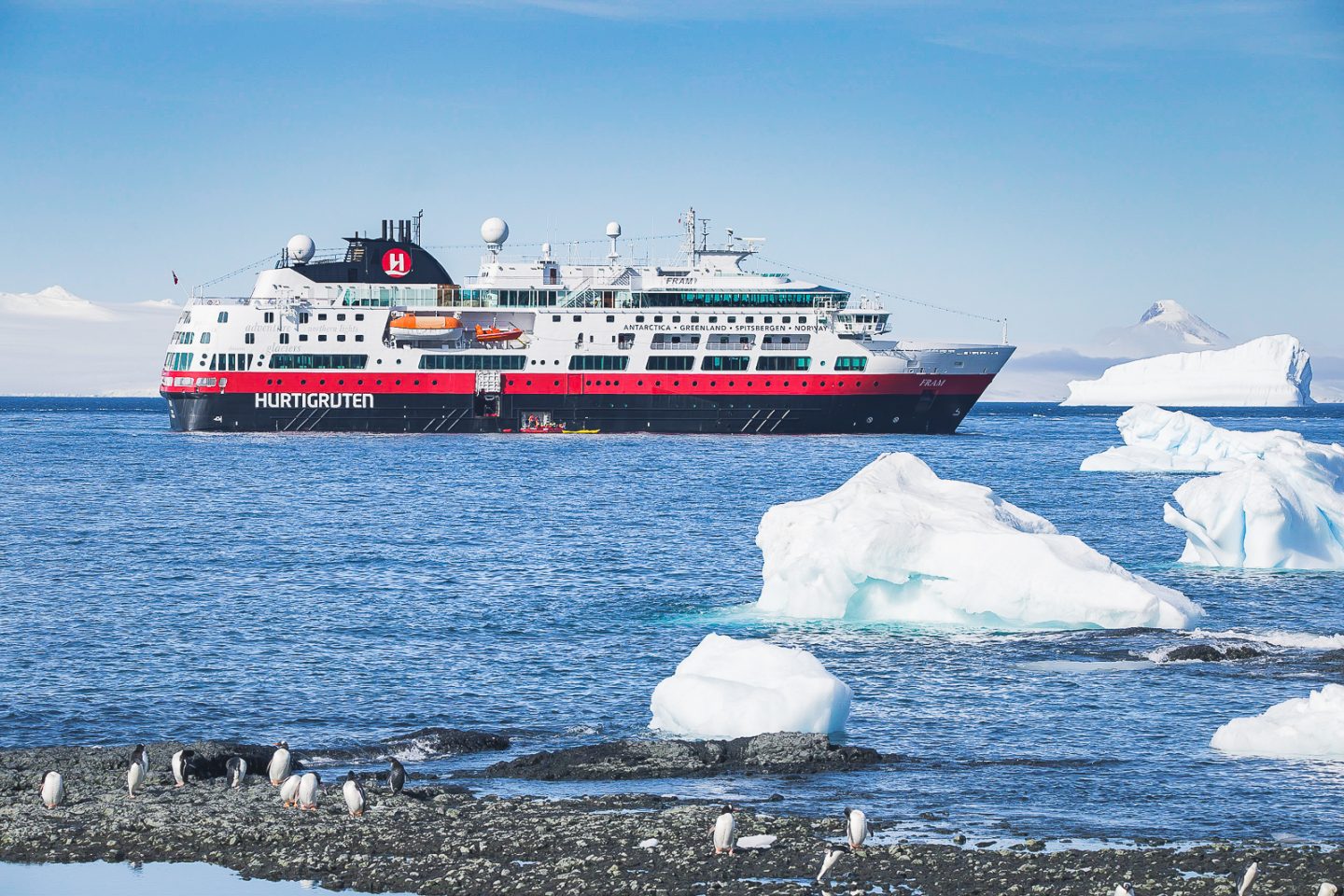
We met people from all over the world. Most of the ship was Norwegian, British, French, German, or American. Carlos was proud to represent Brazil by himself, while Julie was one of three Canadians. Everything was presented in English, German, and French, including live translations. We were by far some of the youngest people on the ship, but we so enjoyed getting to know our fellow guests; many (if not all) of whom were even better-travelled than we were and still looking for adventure at their age. What role models they were – we want to be just like them when we grow up!
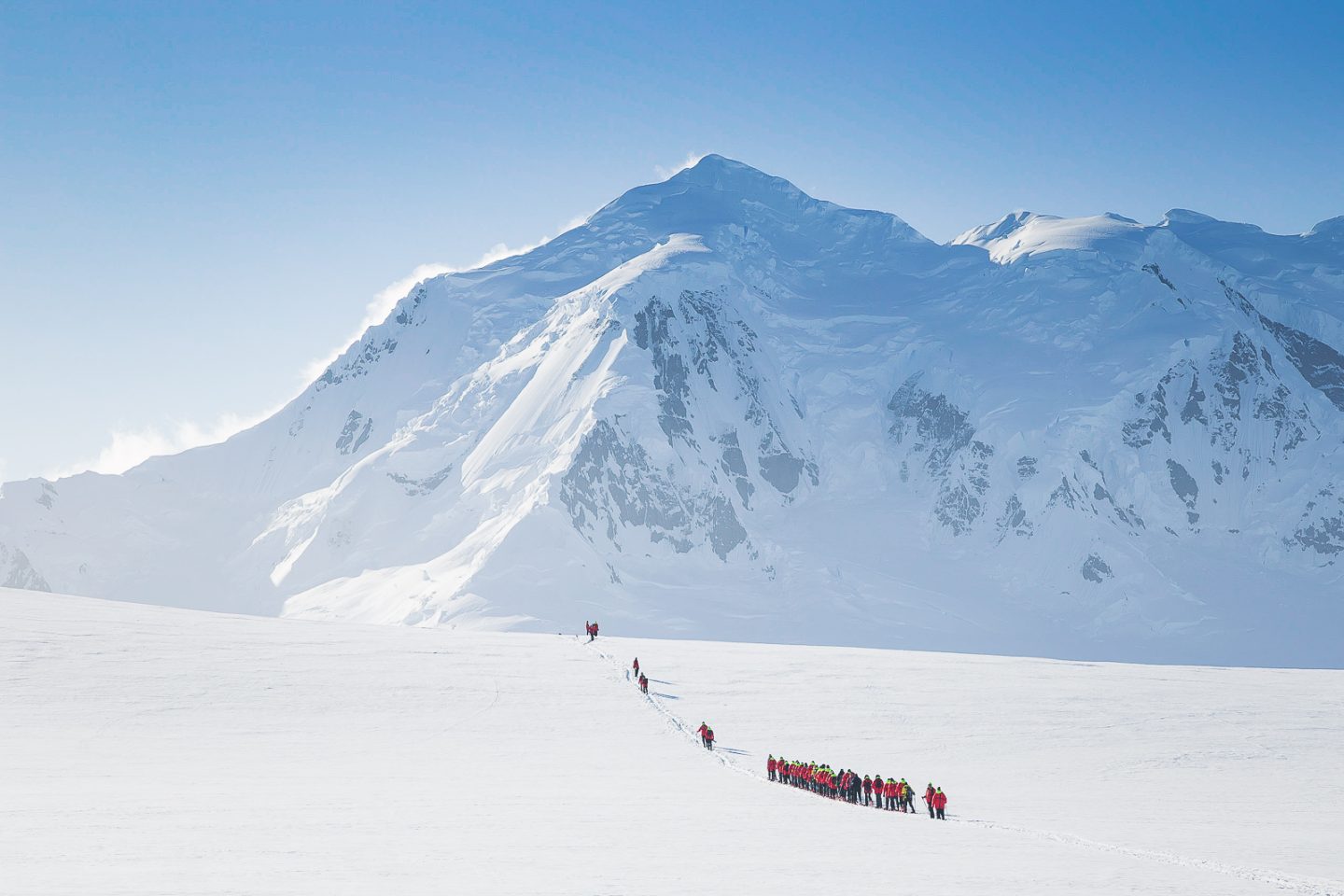
Besides fellow guests, we also had the Expedition Team, the MS Fram Officers, and the MS Fram Crew onboard with us. The Officers and Crew kept the ship running, while the Expedition Team interacted with us the most. They were really our guides throughout the entire journey, with expertise in biology, geology, ornithology, polar activities, history of the region, and general experience with this unique part of the world. We even had a professional photographer who documented the entire trip! They were always the first ones to disembark and prepare the landings, then the last ones to leave. More than anything, what we’ll remember was the passion they had for their work, which they never hesitated to share with us.
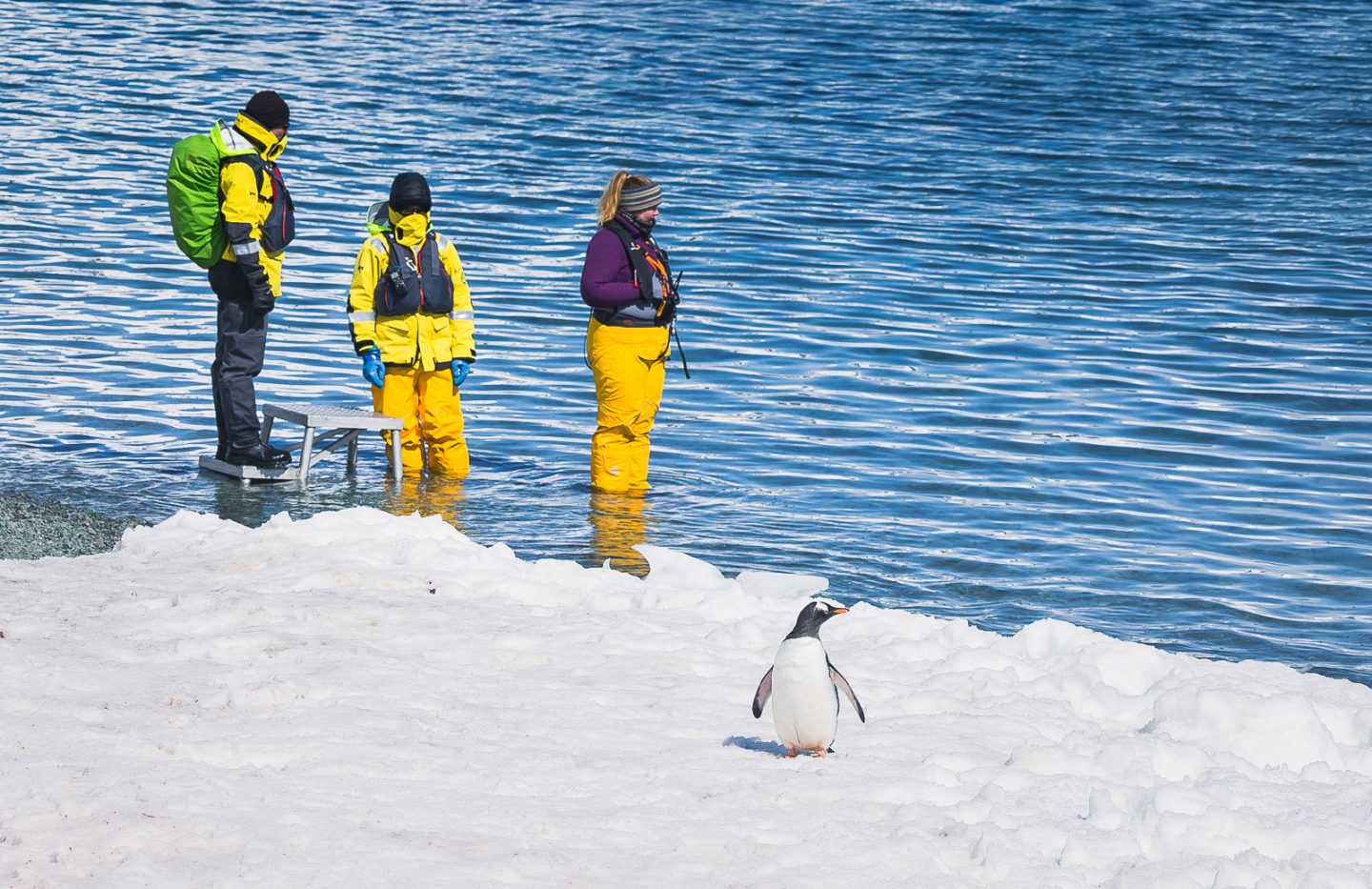
The Expedition Team also kept us occupied on sea days with plenty of lectures and activities. We loved learning about every aspect of the expedition – wildlife biology, polar history, landscape photography… you name it. There was even a science corner where we could get a closer look at samples the Expedition Team collected during our trip, like Antarctic ice and krill. We soaked up every minute. Unlike typical cruises filled with endless food and drinks and entertainment similar to Las Vegas, the Antarctica expedition felt like an immersive adventure and educational field trip to the most remote place on the planet.
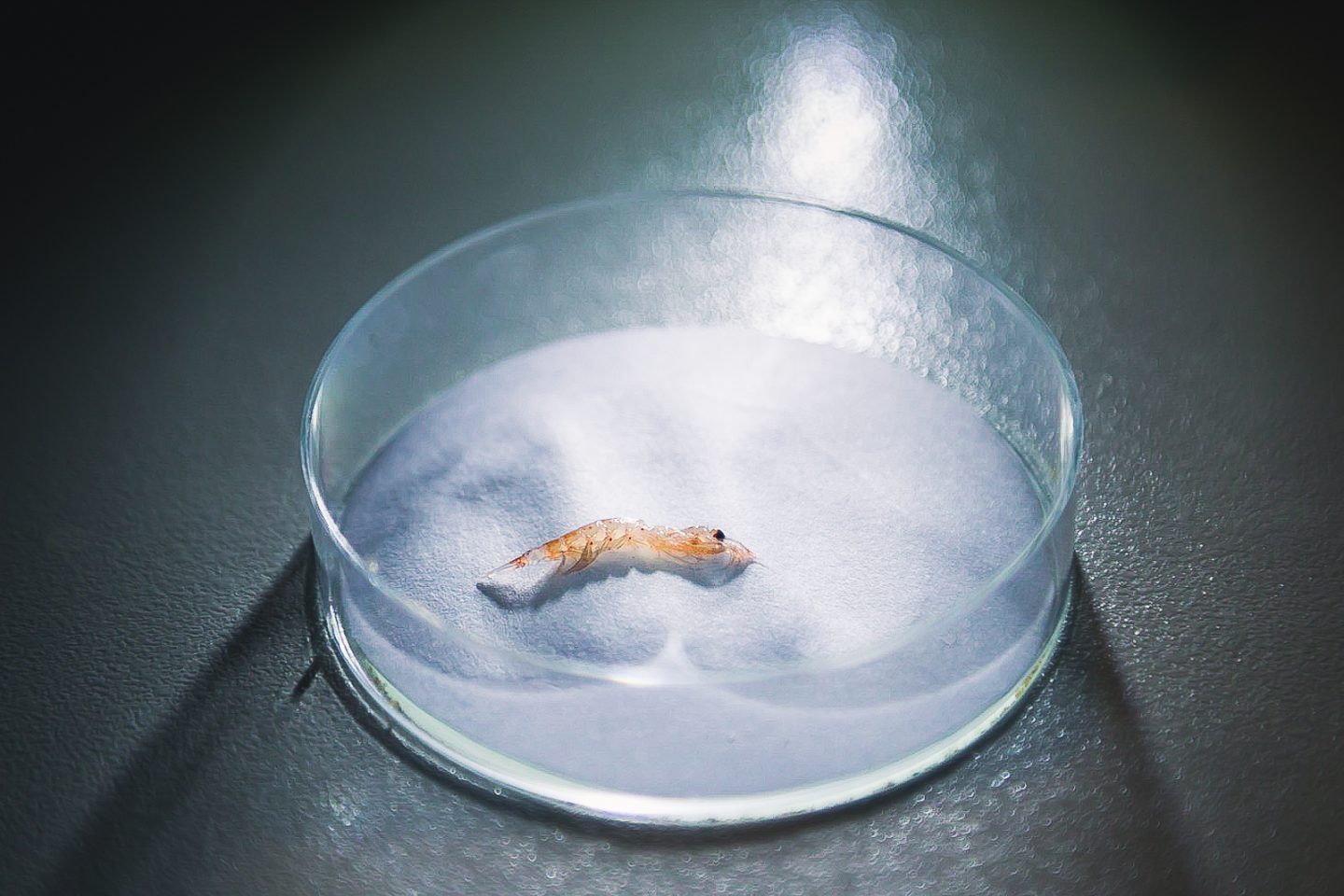
Speaking of the food, the MS Fram Crew cooked and served us incredible meals, much better than we ever expected. Breakfast and lunch buffet everyday, with dinner buffet on landing days and seated service on sea days. Needless to say we gained some weight over these three weeks. There were also Norwegian specialities that we got to try, like Norwegian brown cheese, Norwegian rice pudding, pickled herring, reindeer, etc.
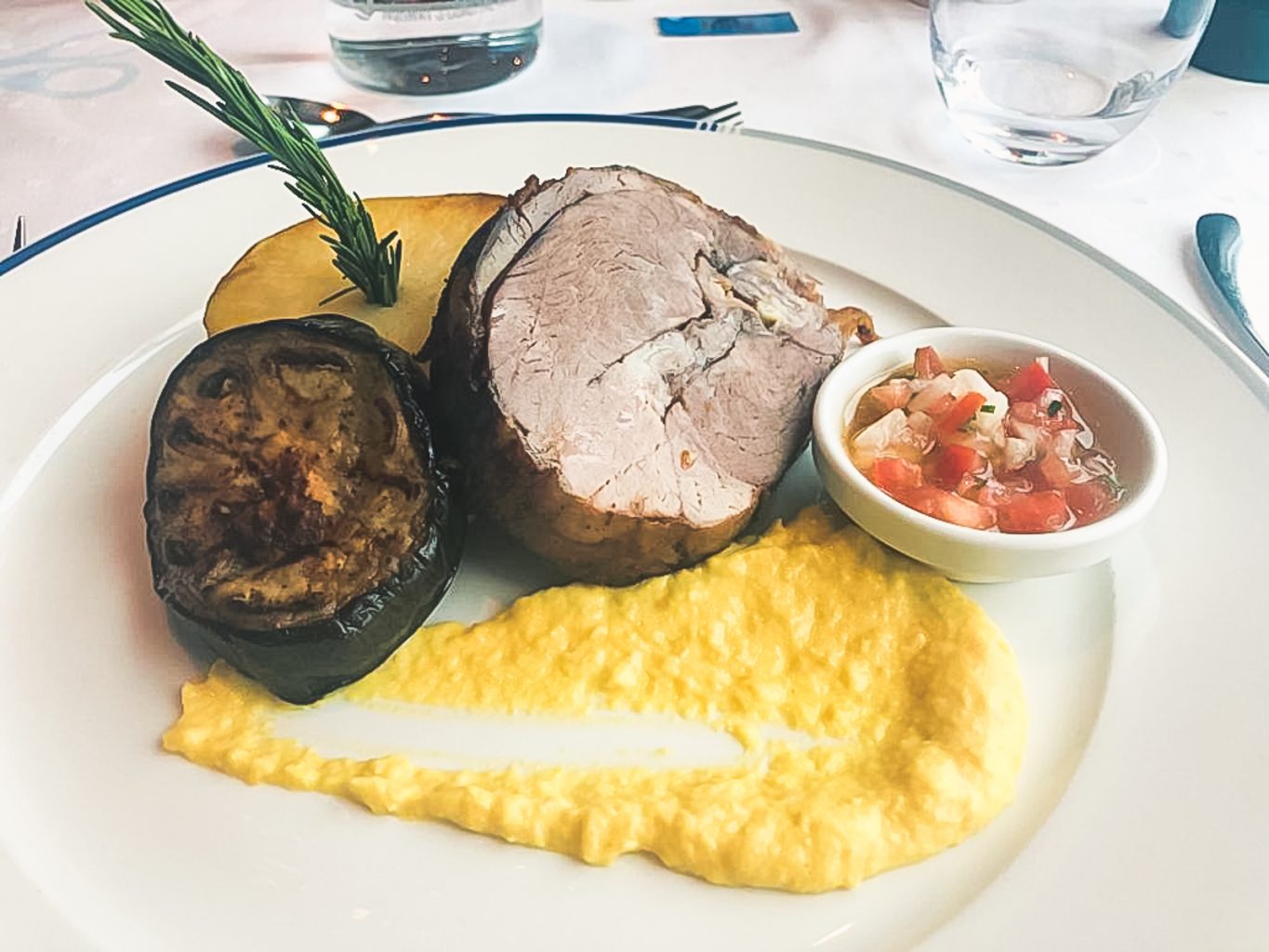
For the first time on a cruise, we didn’t have an inner cabin (only because they had sold out!). That meant everyday, we had a cute little round porthole to look through from our room (what luxury!), first thing in the morning and the last thing at night (though it never really got dark).
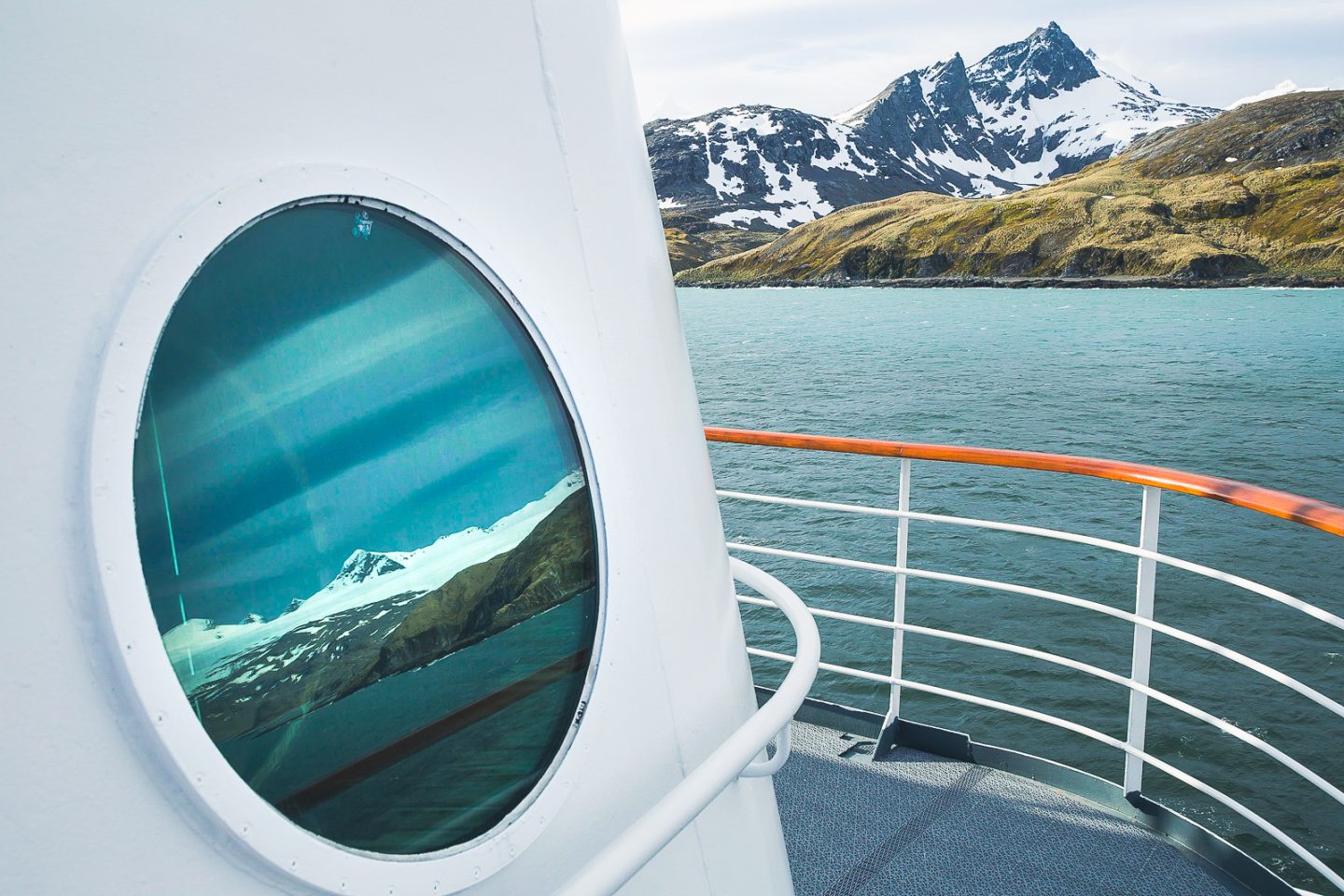
While we spent plenty of time inside the MS Fram, the best part of the ship was outside. Some of our best memories on the MS Fram were moments out on deck where we watched the ship sail toward and beside spectacular scenery with our own eyes. There’s something about being out in the open that makes you feel like you are part of what’s around you. We felt the sunshine and the cold breeze. We heard the seabirds and seals. We watched the clouds float across the sky, the sun rise and set, but the sky never truly darken.
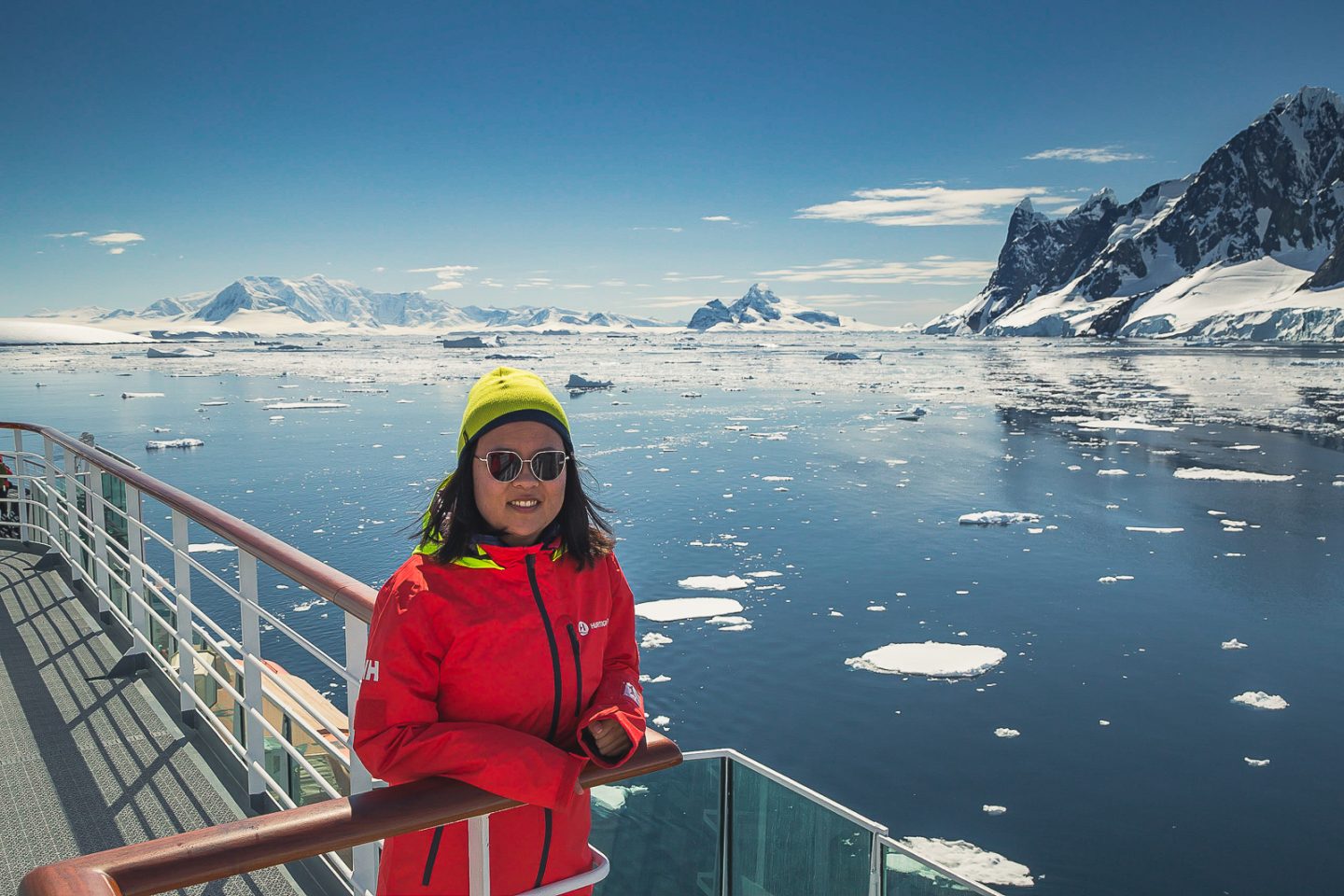
We even had two outdoor hot tubs on deck (don’t get Carlos started on how excited he was about this)! Neither of us will ever forget lounging in the hot tub in Antarctica with one-of-a-kind views. There will probably never be a cooler hot tub experience than this.

The Fram holds a special place in history; this Fram holds a special place in our hearts.
Peace and Conservation
There are many aspects of Antarctica that are unique, but one in particular isn’t mentioned enough: international cooperation on environmental conservation. Countries all over the world have come together and agreed to maintain peace, share in scientific research, and preserve and protect the Antarctic environment. This includes sustainable tourism as more and more travellers like us want to visit the only continent without native human population. It’s been working so far – what we saw was pristine and untouched nature… rare these days. Let this continue as well as serve as a guide for what can be possible when we all come together to solve problems that transcend borders.
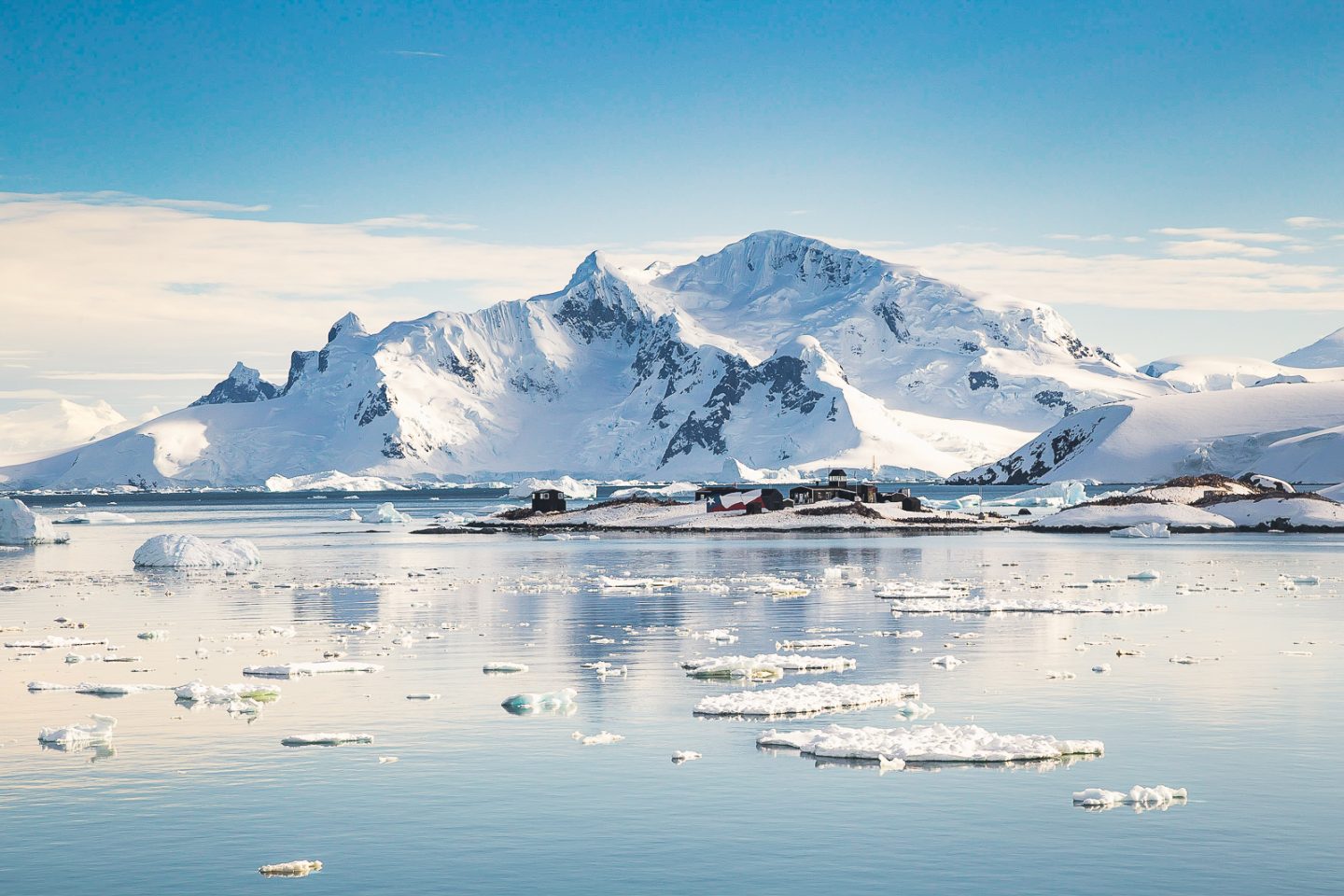
For more details on each of our expedition destinations and days, please check out each post and gallery:
These three weeks were the best of our lives. How will we ever top this?

